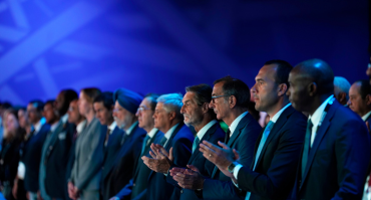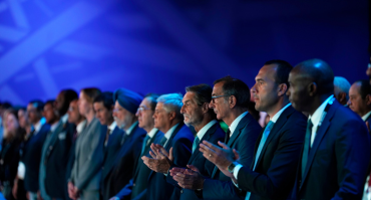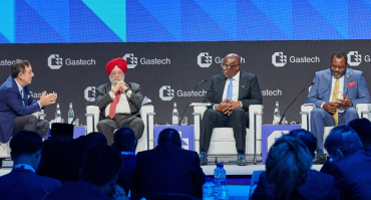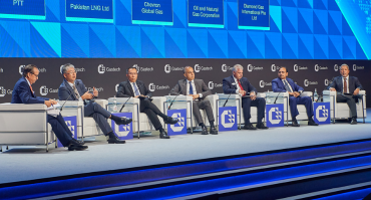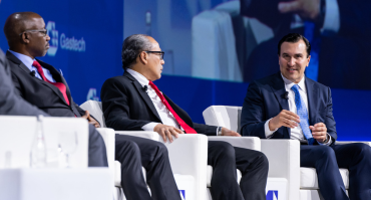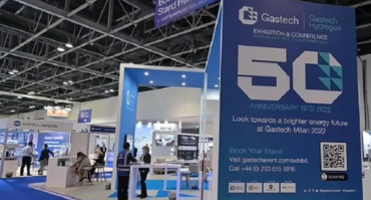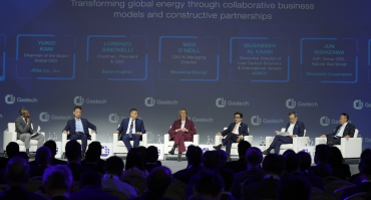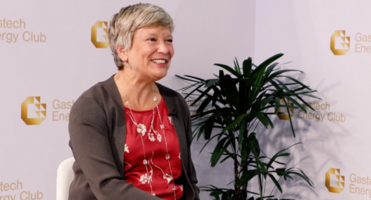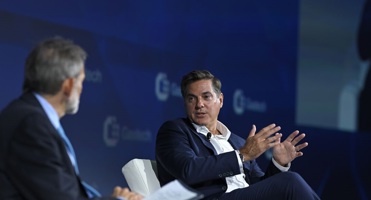Gas prices in Europe increased by 50% over the period from November 2024 to February 2025. This was largely driven by a spike in demand for gas in the power sector due to lower production of electricity from wind, hydro and photovoltaics (known as the Dunkleflaute phenomenon). The fact that this winter was slightly colder than in the last two years also contributed to higher prices.
Although they have eased off since, the forward prices for summer gas are around 40 €/MWh at present, which is about 15 €/MWh higher than the average price of summer gas last year, which was around 25 €/MWh. Prices also remain significantly above the historical average and are three times higher than the natural gas prices in the USA, making Europe structurally uncompetitive. Most concerningly, prices are now much more volatile as European and Asian markets compete for cargos in a tight LNG market with spikes in prices expected to continue amongst other things due to increased supply side inflexibility discussed below.
As of 8 March, EU storage was 36.82% full which is significantly lower than it was this time last year1. Europe is facing a much more challenging year than most EU politicians are willing to admit. Probably the most difficult year since the invasion of Ukraine and the introduction of sanctions against Russia. The negative spread between the summer TTF gas price of 38.900 €/MWh and the winter price of 37.700 €/MWh means that there is no commercial incentive to start filling storage. The positive spread needs to be at least 3 to 4 €/MWh to cover transportation, storage and capital costs.
As Anne-Sophie Corbeau, Global Research Scholar at the Center on Global Policy at Columbia University, explained on the Columbia Energy Exchange podcast, it was not policy actions of the Commission that enabled the EU to weather the dramatic reduction in flows of Russian gas in 2022 but mild weather.2 The reduction in flows of Russian gas also came at a huge cost - a 20% industrial demand destruction - which, given that prices of LNG are expected to remain high in the future, now looks irreversible. According to the calculations of economist JP Damijan, the higher energy prices and the inflation unleashed thereafter resulted in a cumulative 6%3 reduction in GDP in the last three years.
The Oxford Institute of Energy Studies predicts that the EU will face a 25 bcm gap between supply and demand this coming winter (even if we don’t have a particularly cold winter). With gas via Ukraine not flowing since 1 January 2025 when the transit agreement expired, a further 7% of gas was removed from European supply, increasing pressure on gas prices in Europe. Moreover, this removal further reduces supply side pipeline flexibility going forward, thereby exposing the EU even more to the vagaries of the tight LNG market.
The LNG market is expected to remain tight until at least the end of this year. The market consensus is that the new LNG supplies will not come to the market in time to help ease the pressure which filling up storage in line with the EU Commission’s regulation will trigger by summer. During Commission meetings in Brussels last week calls were made for storage obligations to be eased to avoid similar spikes in gas prices to those seen in August 2022. So far there is little indication that the Commission will head such calls albeit there are some rumours it is exploring the possibility of subsidising Hungarian and Slovak LNG purchases provided they are stored in Ukraine. In these circumstances, Anne-Sophie Corbeau considers 2025 as “the year of life or death for Europe especially for the industrial sector” and sees only Russian gas as the solution. 4
In these circumstances the change in US policy towards Russia under President Trump may come to the EU’s rescue with the Financial Times reporting that many in the EU are expecting Russian pipeline gas to start flowing again before the end of the year. Last week, Reuters reported that the White House had asked the US Treasury to swiftly ease energy sanctions as part of the peace settlement between Russia and Ukraine.5 The possible US stake in Nord Stream has also been floated in the media.
Many are skeptical that such energy rapprochement is possible between the US and Russia given Trump’s commitment to unleashing US LNG exports. In this regard they point to President Trump’s recent granting of LNG export license to the Commonwealth LNG project in Louisiana for sales to Asia and Europe as well as statements from other members of the White House team concerning new LNG projects. However, with Shell and other gas aggregators expecting the global demand for LNG to rise as much as 60% by 2040 others argue that there is room for both Russian and US gas6. The growing demand for energy in USA including for 24/7 reliable power for data and AI centres and the upward pressure on US domestic gas prices if such demand outpaces supplies to domestic US market is pointed to as a reason why Trump may even end up having to curtail exports going forward as a way to protect US competitiveness.
To understand what is likely to happen to the LNG market this year, in the short term (up to 2027) and in the long term, one may also wish to consider inter alia (i) the growing geopolitical tensions between the US and China and in particular, the short and long term implications of the Chinese 15% retaliatory tariff on US coal and LNG products as well as a 10% tariff on crude oil, agricultural machinery and large-engine cars imported7, (ii) the risks of Qatar ceasing gas exports to the EU should penalties be imposed against its companies under EU sustainability due diligence8, (iii) the implications of the introduction of the Carbon Boarder Adjustment Mechanism (CBAM) in the EU9, (iv) the trajectory of demand in China and other Asian countries, (v) the integration of the global LNG market going forward with an increasingly high proportion being traded on the spot market, and (vi) the implications of the introduction of the EU’s Methane Regulation.
To unpack the implications of the Methane Regulation in particular, it should be noted that the obligations imposed on LNG importers come into force in January 2027. The fear is that gas sellers and US LNG exporters will “price in” any additional commitments they are required to give to EU importers or, in case an agreement cannot be reached between them, simply decide not to sell gas to the EU. A meeting to discuss US concerns regarding the Methane Regulation is expected to take place this week in Houston during CERA Week.
In conclusion what can be said with some degree of confidence is the following: since gas withdrawals this winter significantly exceed those of the past two winters, EU buyers will need to compete to attract LNG cargoes (otherwise destined to Asia) to replenish stocks in summer 2025. This is, and will, continue to drive wholesale gas prices both in Europe and around the world. Weather conditions will play a key role in either exposing or mitigating these risks. Although several LNG production projects are scheduled to come online this year there is market consensus that they will not come online before November and most likely early next year and as such will not provide relief for the tight global LNG market. There may also be further delay in anticipated LNG volumes coming online from 2026 onwards. Given the recent developments on the Ukraine/Russian battlefield, the intensification of discussions between US and Russia and this week’s meeting in Jeddah between the US and Ukraine many are betting that Russian gas will start flowing again to Europe before the end of the year.
Ana Stanič, founder of E&A Law, is a lawyer and arbitrator with over 25 years of experience at the intersection of energy, EU and international law (www.ealaweu.com).








